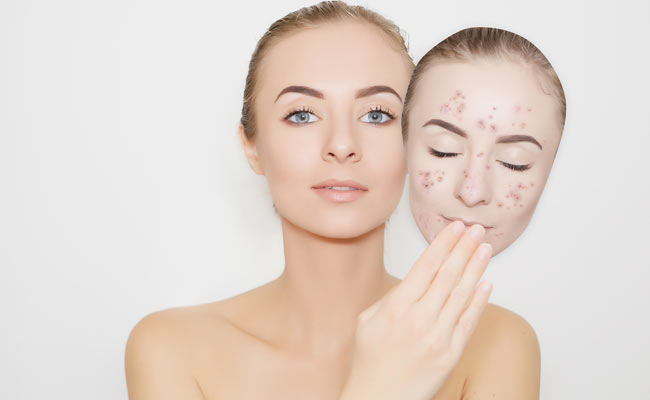Regardless of your skin tone, irritation and redness can appear due to a number of reasons. Redness is especially prone to show up more drastically on those with lighter skin tones than dark ones due to broken capillaries and blood vessels that rush to an affected area.
Increased visibility on the skin for paler skin tones is a common concern that sometimes shows up in the form of rosacea, acne and other skin conditions where inflammation is likely to occur. Sometimes redness easily occurs from simple actions such as rubbing the face, crying, laughing and even embarrassment, which can cause blushing.
Pale skin is also likely to suffer from more redness and blotches that other skin tones don’t necessarily deal with, but with skin correcting treatments, redness can easily be fixed with a few easy steps so skin can look even and translucent.
Clean Skin
Before beginning any treatment, clean skin is of the upmost importance to ensure that any product properly absorbs into the skin. A gentle cleanser containing no fragrance or detergent is best so that irritation doesn’t occur.
Dry skin is most prone to irritations due to its sensitivity and the thin skin associated with this skin type. Oily skin is also prone to breakouts due to excessive oiliness that can mix with dirt, causing acne.
It’s always best to cleanse the skin twice a day, once in the morning and once before bedtime, to wash away the day’s debris and other pollutants that might have formed on the skin throughout the day. Once you have done so, you can move on to the next step to treat any red blemishes.
Spot Treat
Occassional redness doesn’t only occur in oily or dry skin types, but can also show up in normal skin also. Ideally, the skin should be balanced and free from flaws, but being human, things don’t always turn out that way.
The best acne scar treatment requires active ingredients that will soothe and acne-causing bacteria. Tea tree oil, clay masks and benzoyl peroxide are all great solutions to help quell redness and inflammation.
For allergic reactions that occur with eczema, hives or other skin rashes, ingredients such as aloe vera, honey, apple cider vinegar and oatmeal help to relieve red spots on the skin.
It might take some time for natural ingredients to work, but for faster remedies, you can also seek out products that contain hyaluronic acids, ceramides and salicylic acids to help combat blemishes.
Concealers
Concealer is another option for handling redness in the skin. As well as scars, dark circles under the eyes and evening out skin tones, concealer helps to reduce redness by canceling out the red pigments in the skin. When you have broken blood vessels, rosacea or acne, green concealer helps to cancel out redness.
Flesh tones concealers are a viable option for reducing redness but can be a bit tricky when you’re searching for a correct pigment. Concealers should be a shade or two lighter than your natural skin tone, but if you choose the wrong shade, your skin can look even more bruised.
Concealers can also help to heal the skin as you cover up unsightly blemishes. Spot treatment concealers are also available in an array of colors, for treating redness for both oily and dry skin types, with ingredients that help conceal and heal the skin.
Healthy Habits
Pale skin is beautiful, but daily wear and tear can easily cause its appearance to diminish. Habits such as tanning and smoking can wreak havoc on the skin and cause irritations and redness due to harsh chemicals and exposure to harmful sun radiation.
To naturally avoid redness, the solution is simple. Keep skin moist and healthy from the inside out by drinking lots of water, which is proven to flush out toxins and reduce inflammation.
Keep skin away from harsh substances, such as common household cleaners and sprays and wear protective gloves whenever possible. When outside, wear an SPF of at least 30 to protect delicate skin. Some people with rosacea even often wear hats to protect the skin on the face.
If you’re not sure what you may be allergic to, a dermatologist can perform an allergy test to narrow down possible causes. Other treatments for red marks on the skin include topical solutions such as hydrocortisone and corticosteroid cream, which have been proven to alleviate redness and irritation.
Like other skin types and complexions, pale skin is susceptible to a number of conditions. Some which may produce redness and pink spots on the skin. It’s important to protect the skin from outside forces that can render your skin like a lobster and use gentle products for a healthy, rosy complexion.

